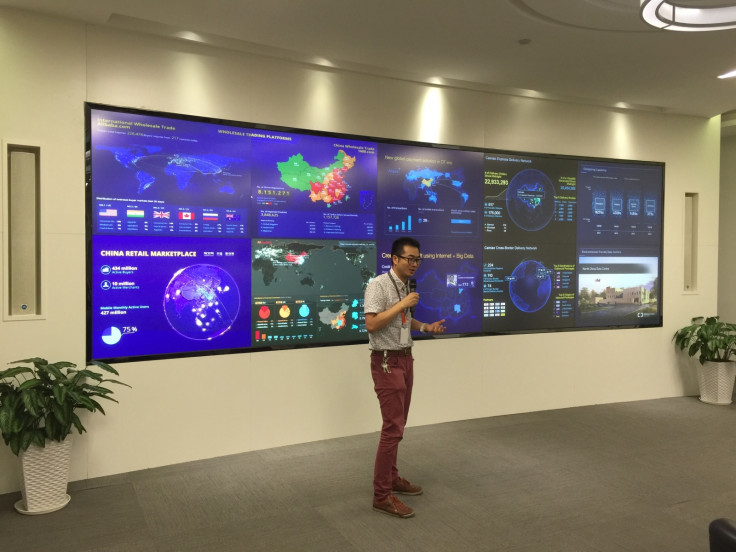2018 digital commerce trends: Mobile payments, burst bubbles and social commerce
Jason Mander, Chief Research Officer at GlobalWebIndex, looks at race between Amazon, Alibaba and Apple.

As far as the headlines are concerned, the story of 2017 reflects a growing movement away from globalisation. However, the process of globalisation in the digital world is being driven by the people, not politicians, and it will never stop.
Over the course of 2016 alone, a staggering 350m people chose to get online for the first time. The scale of the addressable audience for any business is being radically supercharged as a result of the ability to scale internationally quickly. Take Dollar Shave Club, the company went from $0 to $200m in global revenue in only 4 years and completed a $1bn exit.
While the Trump administration portrays a US receding from the international community, GlobalWebIndex figures reveal that Amazon has now successfully managed to break into the list of top two commerce platforms in Latin America, Asia Pacific, Middle East & African (MEA) regions, despite the substantial presence of regional favourites including Alibaba. Looking at China specifically, that 1 in 5 internet users are using Amazon each month is a clear victory for the US company.
Released later this month, GlobalWebIndex's Trends 18 report examines why it is crucial for companies to engage their audience through every available platform, enhance the ease of purchasing and employ the right influencers to expand their market size and sell direct to consumer. Here we take an early preview of how these trends will evolve over the next year.
The mobile payments race
The march towards a cashless society is largely underpinned by mobile payments. Two payment providers in particular – Alipay and Apple Pay – are eyeing up the current window of opportunity to establish themselves in many emerging markets that have relatively undeveloped financial infrastructures and rapidly expanding smartphone penetration rates.
While complex regulation makes international expansion a time-consuming and investment-heavy process for Apple Pay, the brand is emerging as a true heavyweight in its class. By contrast, Alipay's parent company, Ant Financial, is investing in or acquiring established native players with local knowledge to leverage their existing market share. This tactic has given Ant in-roads into India, South Korea, Philippines, Thailand and Indonesia, all markets where the which Near Field Communication infrastructure required for Apple Pay are limited.
As 2018 progresses, we will see a large portion of the mobile payments landscape carved up between Apple Pay and Alipay. Much of this division will be based around infrastructure development, with fast-growth markets most likely gravitating towards Alipay's turnkey solution, and mature markets easing into the idea of contactless m-payments via a trusted brand like Apple Pay.
Social commerce resurgence
It is often assumed that buying through social will transform the way we shop online but, as we enter 2018, the e-commerce ecosystems of western markets are still firmly rooted in traditional online retailers. Meanwhile Chinese social services have innovated aggressively in this arena, allowing users pay for bills or items (in-store or online) via their platforms.
The global players have not been idle, however. Pinterest has invested significant resources in its visual search technology product Lens, and Instagram has tried to bridge the gap between visual brand discovery and purchase in its 'Tap to View' tags. Both of these are great examples of platforms using their existing strengths to add real value to the shopping experience.
The heart of the issue here is convenience – social commerce could allow for a seamless online shopping experience, one which is centred around the smartphone providing consumers with innovative, on-hand tools to find the products they want. While China is obviously an exemplar, localised solutions in selling the idea of social commerce in mature markets need to be employed which don't overstep their mark.
Influencer bubble bursts
Another key element to social's commercial success will be maintaining authenticity. Influencer marketing has become the industry's hot go-to strategy – with the ongoing challenges of ad-blocking and banner fatigue, pure digital ads are no longer as appealing as they once were.
But influencer marketing may not be as fool-proof as it sounds. As more and more brands jump on the bandwagon there comes the threat of 'influencer fatigue'.
An overloaded use of celebrity influencers is not a sustainable strategy and it's only a matter of time until a lack of authenticity bursts the bubble. A key use case here is L'Oréal, who transferred significant investment from traditional media to influencers, reportedly seeing a positive impact on sales thanks to the influence of its 'Beauty Squad'. This is successful because it partners with micro-influencers rather than high-profile celebrities, and by allowing these women to critique the products they weren't happy with, the content appears believable.
The key aspect of succeeding in today's globalised market is knowing your audience. The core marketing processes of identifying the most important audience and defining how to engage – while always a key part of marketing – is now paramount for success. When markets are so large, marketing built without highly segmented communication will fail.



















